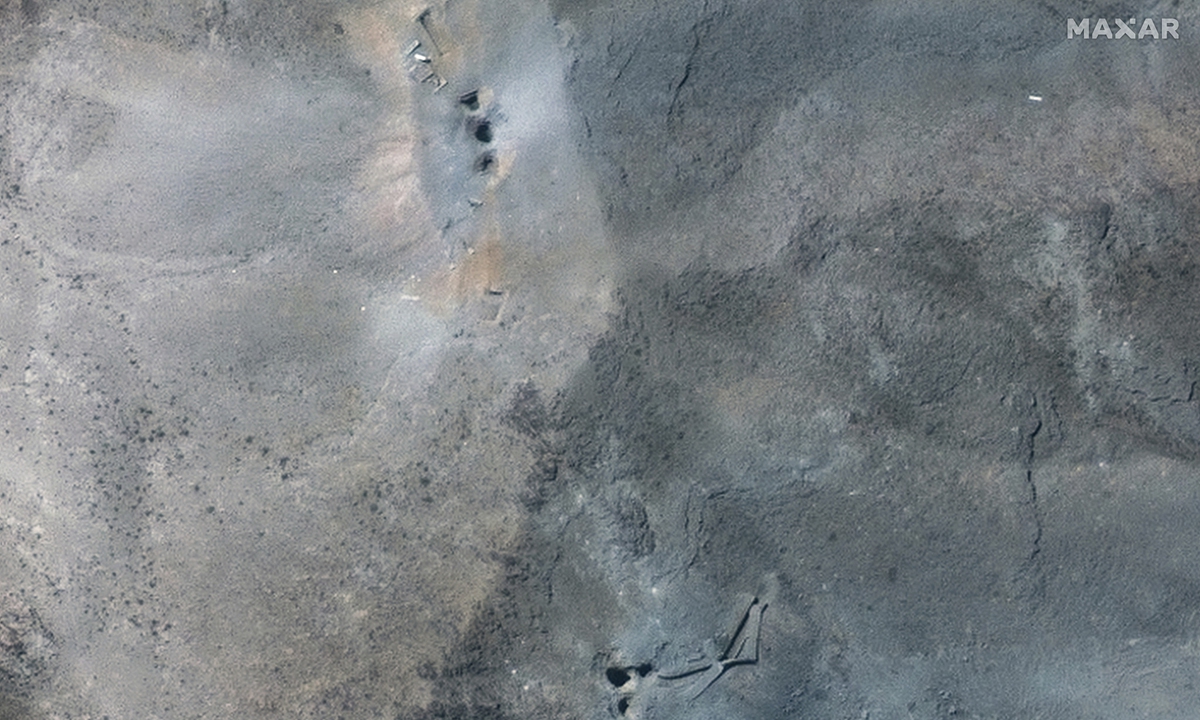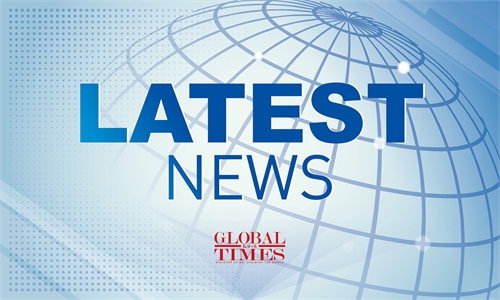Obliterated or damaged? Initial assessments, satellite images of Fordo nuclear site contradict Trump's claims: report

This satellite image provided by Maxar Technologies shows a close up view of holes and craters on a ridge at Fordo enrichment facility in Iran after US strikes, Sunday, June 22, 2025. Photo: VCG
Initial assessments from various parties and newly released satellite images suggest that Iran's nuclear site at Fordo was more likely seriously damaged after the US overnight strikes, rather than completely destroyed as claimed by the US president, according to the New York Times. Further investigation into the internal damage of the nuclear site is still needed for a more comprehensive and accurate assessment.
The US launched "Operation Midnight Hammer" on Saturday night, striking three nuclear facilities in Iran — Fordo, Natanz and Isfahan. In in these strikes, the US used the GBU-57A/B Massive Ordnance Penetrator bomb, known as the "bunker buster," according to media reports.
After the overnight strikes on Iran, US President Donald Trump on Sunday declared the operation a "success," claiming that Iran's nuclear enrichment facilities were "completely and totally obliterated," according to the New York Times.
Israel's Prime Minister Benjamin Netanyahu said on Sunday that the US had inflicted "very serious damage" on Iran's hard-to-reach Fordo nuclear site, but declined to go into detail about the extent of the damage, The Times of Israel reported.
Citing two Israeli officials, the New York Times reported that in an initial analysis, Israeli military believed the nuclear site at Fordo sustained serious damage from the US strike, but was not completely destroyed.
Similarly, a senior US official acknowledged that the American strike on the Fordo site did not destroy the heavily fortified facility but said the strike had severely damaged it, taking it "off the table," according to the New York Times.
Iran's Atomic Energy Organization confirmed the US attacks, but said its work would not be halted. Iran had evacuated the three nuclear sites "a while ago," said Hassan Abedini, deputy political director of Iran's state broadcaster, adding that Iran "didn't suffer a major blow because the materials had already been taken out," Xinhua News Agency reported.
Satellite images released Sunday local time by Maxar Technologies, a US defense contractor, show the damage to the mountainside where the underground nuclear site at Fordo is buried about 300 feet deep, according to the CBS News. It noted that the images show several large diameter holes or craters on the top of the ridge over the underground complex.
Satellite imagery also showed significant discoloration of the mountainside where the facility is housed, indicating a vast area was covered with a layer of grey ash in the aftermath of the strikes, according to CNN.
Stu Ray, senior imagery analyst at McKenzie Intelligence Services, told the BBC that it looks like three separate munitions were dropped on two separate impact points, and that the grey colouration on the ground appears to show concrete debris blown out by the explosions.
In an interview with CNN, David Albright, president of the Institute for Science and International Security said that the satellite imagery suggested "a considerable amount of damage could have been done to the enrichment hall and adjacent halls that provide support to enrichment."
Amid rising questions over whether US operation has destroyed the bulk of Iran's enriched nuclear material, Trump said in another post on Truth Social Sunday night (local time) that "Obliteration is an accurate term! The white structure shown is deeply embedded into the rock, with even its roof well below ground level, and completely shielded from flame. The biggest damage took place far below ground level. Bullseye!!!"
According to an official release by the United Nations' International Atomic Energy Agency (IAEA) on Sunday local time, Director General Rafael Mariano Grossi said the Fordo nuclear site was directly impacted, "but the degree of damage inside the uranium enrichment halls can't be determined with certainty."
The Director General said the IAEA was informed by the Iranian regulatory authorities that no increase had been detected in off-site radiation levels after the recent attacks on Iran's three nuclear sites.
Grossi emphasized the "paramount importance" of all parties urgently pursuing a diplomatic path aimed at ending the hostilities.
At Sunday's emergency meeting of the UN Security Council, Fu Cong, China's permanent representative to the UN, said that the US attacks on Iran's nuclear facilities seriously violate the purposes and principles of the UN Charter and international law, as well as Iran's sovereignty, security, and territorial integrity.
Amid the abrupt escalation of tensions in the Middle East, China expressed deep concern over the risk of the situation spiraling out of control. The parties to the conflict, Israel in particular, should reach an immediate ceasefire to prevent further escalation and to resolutely avoid the spillover of the war. The parties concerned should abide by international law, curb the impulse to use force, and avoid fueling the conflict, Fu said.
Global Times

